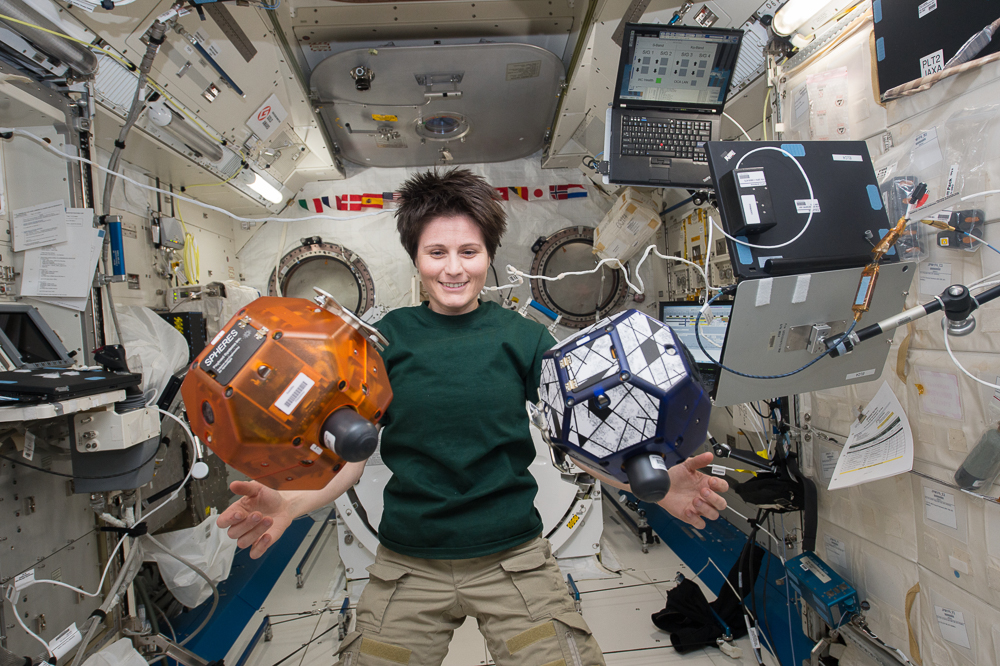
After an emergency incident on the International Space Station (ISS) last week put a pause on routine operations, the astronauts of Expedition 42 were back to the business of unloading supplies and experiments off the SpaceX Dragon CRS-5 spacecraft (which is currently docked to the ISS), as well as conducting ongoing research.
Cutting in on activity onboard the ISS last week, a potentially dangerous situation occurred Tuesday, Jan. 13, 2015, when the crew members of Expedition 42 were moved into the Russian segment of the ISS after an alarm sounded in the U.S. segment at around 4 a.m. EST. The alarm was sounded after flight controllers at NASA’s Johnson Space Center (JSC) in Houston observed increased pressure in the ISS’s water loop for thermal control system B, followed by an increase in cabin pressure, which was suspected to be, at worst, the result of an ammonia leak.

To be on the safe side, the crew was asked to move to and remain isolated in the Russian segment while an investigation occurred. Also, as a rule of procedure, all non-essential equipment in the U.S. segment was powered down. Hours later, data that was collected from several different system sources on the station showed no indication that there was actually an ammonia leak. The crew was asked to wear protective masks upon return to the segment just to be sure there were no traces of ammonia. The crew was not in danger at any point, and a leak was not detected in the end. The alarm was the result of a system error in a computer relay system called a multiplexer-demultiplexer.
Prior to that interruption, on Monday, Jan. 12, 2015, at 8:54 a.m. EST, the SpaceX Dragon capsule was connected to the ISS’s Harmony module. On Tuesday at 3:23 a.m. EST, the crew opened the hatches and started to unpack, beginning with crucial support gear for 256 science experiments on board the spacecraft.
Immediately following its unloading, NASA astronaut Terry Virts set up the Micro-5 study. Scientists will use microorganisms Caenorhabditis elegans (roundworm) as a surrogate model for humans with the Salmonella typhimurium microbe (which causes food poisoning in humans). They hope to better grasp the way crew members’ immune systems change and what the risk of infectious disease is because of that—while they are in space—by observing a series of host-pathogen interactions, conserved cellular responses, and countermeasure efficacy.
Work was also performed this week by Virts for the Capillary Flow Experiment (CFE-2). He conducted work for the second round of the study, preparing the Vane Gap Unit. CFE-2 looks at the movement of fluids on surfaces while in microgravity in order to upgrade the low-gravity fluid systems on spacecraft built in the future. The part of the study that Virts worked on this week expands on this, by also studying the interior corners of walls that have gaps made when two walls or “vanes” intersect. When porous walls are present, this occurrence is even more complex after liquids interact with it.
The CFE-2 experiment is the second run for this investigation, and it will conduct the studies to collect data about how the fluids flow over screens or perforated plates. The information learned will play an immediate and critical role in how spacecraft are designed in relation to how liquid fuels, cryogens, thermal fluids, and contaminated liquid solutions for urine processing are managed. The results of this research could also be used to improve miniaturized biological devices for health screening and analysis on Earth by creating a better way for fluid to flow through them.

Four tests were completed with success this week by ESA astronaut Samantha Cristoforetti, in a joint effort with the ground team, as they worked on the visual navigation part of the Smartphone-MM study. This investigation shows how robots flying around inside the ISS as it orbits the Earth can benefit from using smartphone technology, along with the autonomous navigation capability of Synchronized Position Hold, Engage, Reorient, Experimental Satellites (SPHERES), to operate.
The ability of consumer electronics to perform vision-based navigation is assessed to lower the risk during the technological development of a free-flying robot. The tests performed as of late demonstrated the hardware’s ability, without the use of beacons, to estimate its position in relation to the space station. The information learned during this study will assist in the future development of free-flying robots that can aid in current and future missions, when needed.
A study being conducted in the station will find out how functional low-power radio frequency networks are in the ISS. Low-power sensor nodes are placed around the inside of the ISS to create a wireless network that can observe environmental factors like temperature, pressure, and humidity. This week, the researchers based in Bremen, Germany, that were working on the study from the ground, confirmed that they acquired data from the Wireless-Sensor Network (WiSe-Net) investigation, when they were able to conclude that the MAGVECTOR instrument is receiving signals from the WiSe-Net sensors, acting as a dedicated wireless hub. This research is important for doctors and nurses as it could provide them with uninterrupted monitoring of the vital signs of their patients by placing low-power sensors on their body.
Want to keep up-to-date with all things space? Be sure to “Like” AmericaSpace on Facebook and follow us on Twitter: @AmericaSpace



